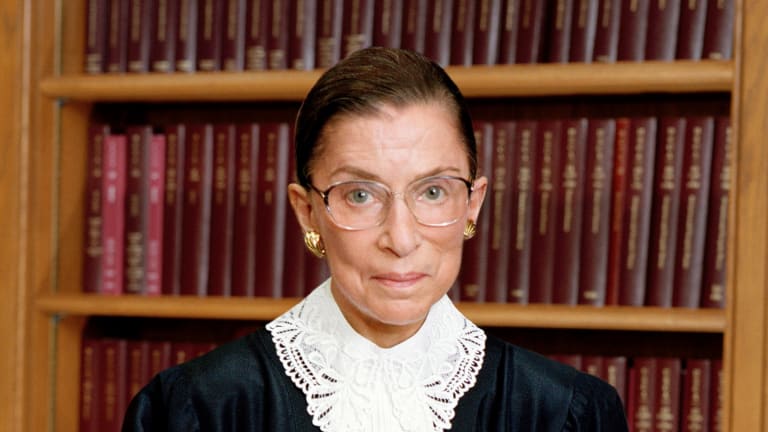Jill Lepore is not a florid writer. No trickery with words. No embellishments to wow the reader. Rather, her writing typically demonstrates deep curiosity, methodical reporting, and clear connections. If another writer or student asks me for examples of intelligent, authoritative writing, one of the journalists I point them to is Lepore.
Which is why it's so delightful to take note of the little moments of metaphor or loft that can be found sprinkled, with restraint, through her analytical pieces.

Last October, in a piece for The New Yorker, Lepore revisited the appointment of Ruth Bader Ginsburg to the U.S. Supreme Court. Called "Misjudged" in the print edition, the piece calls on readers to remember that Ginsburg's journey — through the very male world of law, and long before opportunity was remotely equal — was far more nuanced than today's portrayals of a feminist icon. Long before the planks and bobbleheads and bio-pics, Ginsburg was picking her way forward with deliberate, strategic steps.
Among those steps are the ones that led to passage of Roe v Wade, which has been under attack since its passage in 1973. And at the heart of Lepore's exploration of Ginsburg the lawyer — versus Ginsburg the pop-culture star — is her role in that case. In particular, Lepore poses the possibility that bringing a different case forward — Struck v Struck rather than Roe — might have made abortion attack-proof, and ensured other advances such as the Equal Rights Amendment. As Lepore notes:
If Struck was Ginsburg’s next, carefully placed stepping stone across a wide river, Roe was a rickety wooden plank thrown down across the water and—Ginsburg thought—likely to rot.
Which brings us to that simple but lofty sentence, in which Lepore pulls out of her grounded legal analysis and pauses to note that choices are made and have consequences, and that do-overs are the stuff of fantasy.
"There are more what-ifs than stars in the sky."
In a single sentence, Lepore makes me think about so much more than a single legal ruling.



